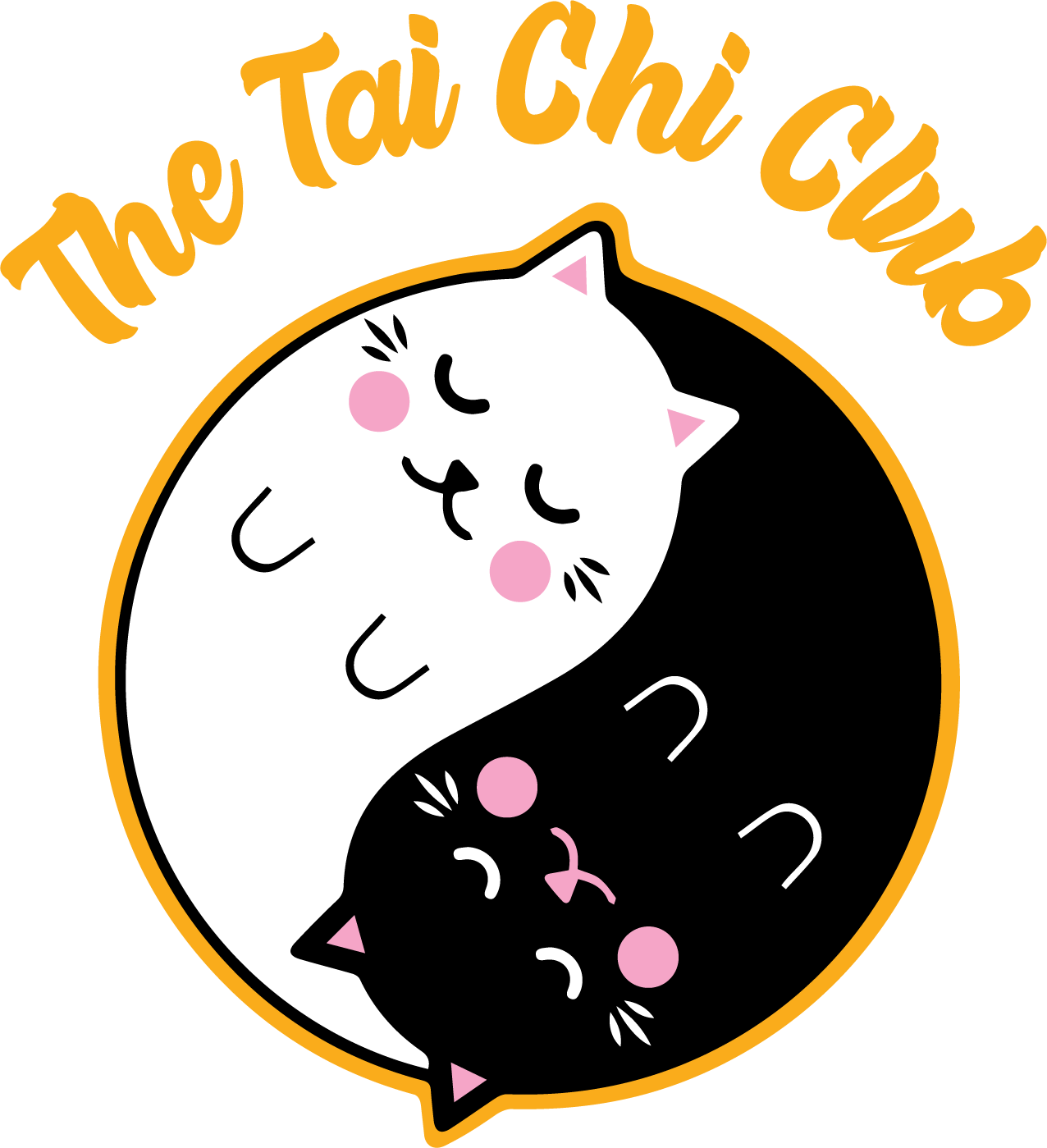The free sword routine class is ongoing since fall of 2024!
Ongoing Outdoor Schedule can be found in our Schedule Page.
Class notice is covered by the Post: 32 Movements Taijiquan: Class Notification and Discussion.
Technical Notes are included in the following blog discussions.
Class Overall Rating
Introduction
In 1957, the Simplified 32 Movements Taijijian (Tai Chi Sword) form was developed as a standardized and simplified routine based on traditional Yang Style sword techniques. The sequence was designed to gradually introduce practitioners to the key principles of Taijijian, incorporating basic sword movements such as stabs, sweeps, and cuts. This form offers a balanced progression from simple to more complex actions, making it accessible to beginners while still reflecting the elegance and martial applications of traditional swordplay. The entire routine can be performed in about 3-4 minutes, providing a practical introduction to the art of Tai Chi sword.
You may notice I inserted some unfamiliar symbols, which are Chinese characters. Including the original Chinese terminology in the sword techniques section serves two purposes. First, many of these specialized terms do not have standard English translations, so the original Chinese allows readers to connect directly with the authentic technique names and compare interpretations. Second, since Chinese is a pictographic language, these characters can add a visual element to understanding certain techniques. For instance, in the famous martial arts novel (侠客行), an advanced technique is inscribed on a stone wall. Literate practitioners attempted to interpret it based on the characters’ meanings but cannot grasp the technique itself. Only the protagonist, Shi Potian, who is illiterate, interpreted the characters visually, discovering the correct movements.
Demonstration
Movement Specs and Step-by-Step Instruction
1. Point Sword with Feet Together
Here is the breakdown of this movement into 5 steps, based on the footwork used in my class.
1 Open Stance, 2 Brush Sword and Push Sword Finger in Bow Stance, 3 Extend Arms in Half-Sitting Stance, 4 Switch Sword in Bow Stance, and 5 Point Sword with Feet Together.
The Key Sword Technique is Dian (点) – Point:
This is an offensive technique. The hand holding the sword exerts force with the wrist, directing energy to the sword tip. The upper part of the blade, opposite the tiger’s mouth, strikes downward in a pecking motion.
Gripping is lift grip, illustrated on the right
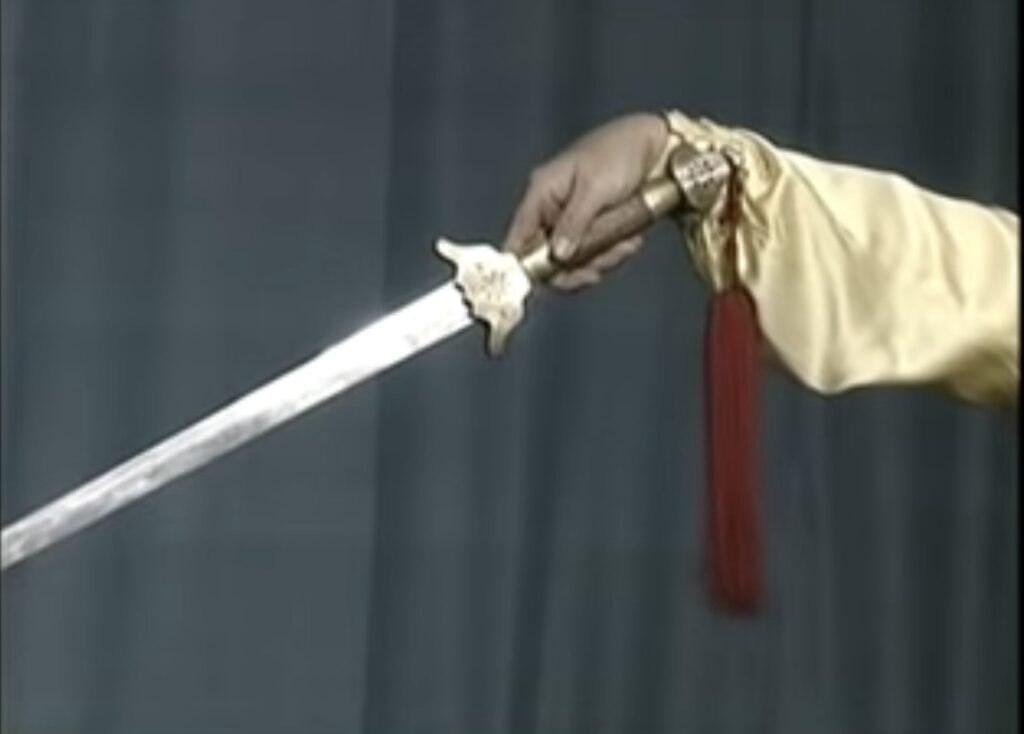
Step-by-Step Instructions
2. Stand on One Leg and Thrust Reversely
Here is the breakdown of this movement into 3 steps:
1. Step back and Draw sword;
2. Withdraw foot and Lift Sword Tip;
3. Raise Left Knee and Thrust Sword Reversely.
The Key Technique is “Ci” (刺) – Thrust
This is an offensive technique. It involves using the legs, waist, and arms to generate force, directing energy to the sword tip to thrust directly into the opponent’s vital areas.
Gripping is inverted grip, illustrated on the fight.
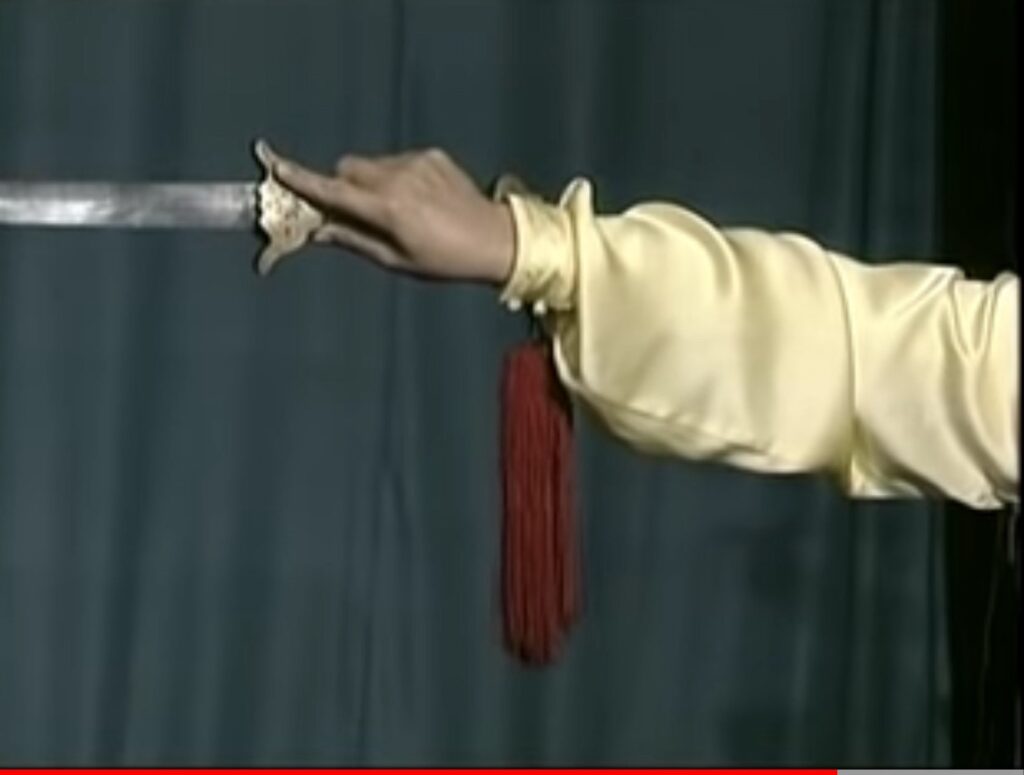
Step-by-Step Instructions
3. Sweep Sword in Crouching Stance
Here is the breakdown of this movement into 2 Steps:
- Step Back and Chop
- Sweep Sword Horizontally in Crouching Stance
The key Technique is “Sao” (扫) – Sweep
In this technique, the palm faces upward, and the sword body is held flat. Using the strength of the waist, the sword blade moves parallel from one side to the other at a low level, sweeping across. This technique has a large range of motion and is aimed at attacking the lower body of the opponent.
Gripping is spiral grip, illustrated on the right.
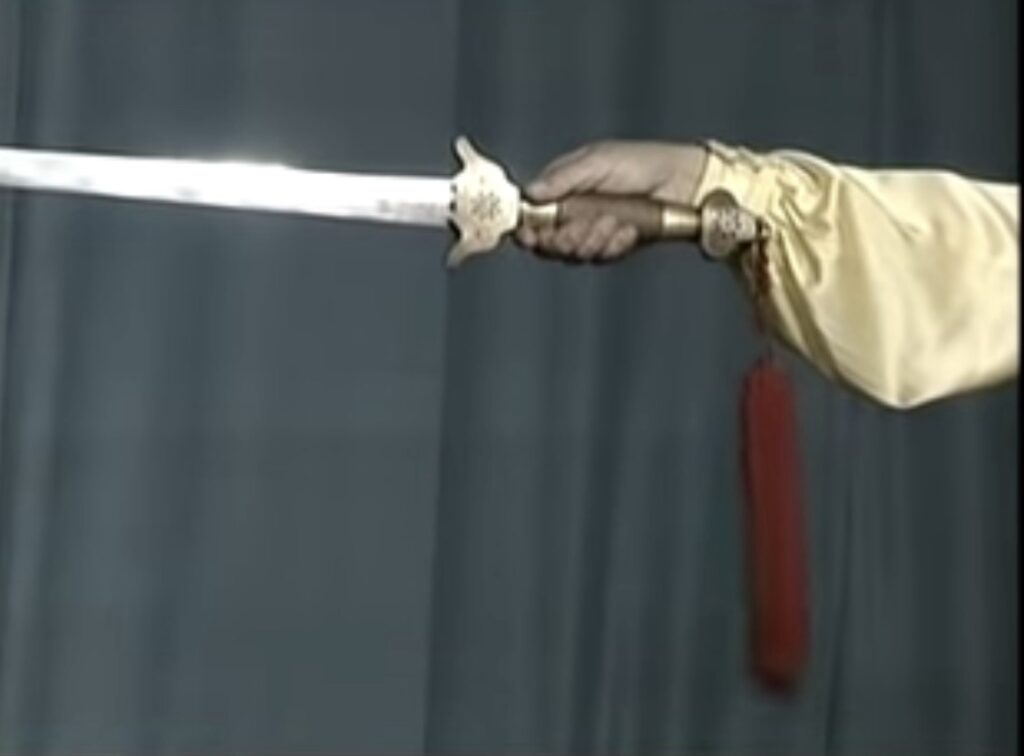
Step-by-Step Instructions
4. Retract Sword to the Right
Here is the breakdown of this movement into 3 steps:
- Draw Foot and Sword
- Step Forward and Extend the Sword
- Retract Sword horizontally to your right in Bow Stance
The key technique is “Dai” (带) – Take back horizontally, retract
This technique is characterized by a defensive motion that serves an offensive purpose. The forearm rotates either outward or inward, applying force to the outer side of the sword blade, causing it to cut or pull back from the front to the rear or diagonally.
Gripping is spiral grip, illustrated on the right.
Step-by-Step Instructions for Movement 4 & 5 are within Movement 5.

5. Retract Sword to the Left
Movement 5 is similar to Movement 4, with the only difference being the ending posture. When you finish retracting the sword to your right in a right bow stance, the left sword finger is positioned by your right hand. In contrast, when you finish retracting the sword in a left bow stance, the left sword finger is placed overhead on the left side.
Step-by-Step Instructions
6. Stand on One Leg and Chop Sword with Arm-Swing
Here is the breakdown of this movement into 3 steps:
- Draw right foot and swing sword to the left
- Step Forward and Raise Sword
- Raise Left Knee and Chop Sword
The key technique is “Pi” (劈) – Chop, Split, cut
This is an offensive technique that utilizes the waist and the entire arm to generate force, directing energy to the middle and front section of the sword blade that is opposite the tiger’s mouth. The motion is executed with a downward strike.
Gripping is spiral grip, illustrated on the right.
Step-by-Step Instructions for Movements 6, 7, and 8 are included within Movement 8.

7. Step Back and Draw Back Sword
Here is the breakdown of this movement into 2 Steps:
- Step Back Left Foot and Raise Sword
- Draw Back Sword in Empty Stance
The key technique is “Chou” (抽) – draw, take back or pull back in a non-horizontal way
This technique is a defensive action. It involves retracting and bending the elbow joint while applying force to the sword blade. The sword blade is drawn back from front to rear or side to side.
Gripping is spiral grip, illustrated on the right.

Step-by-Step Instructions for Movements 6, 7, and 8 are included within Movement 8.
8. Stand on One Leg and Thrust Upward
Here is the breakdown of this movement into 2 steps:
- Turn the Body and Step Right Foot Forward
- Raise Left Knee and Thrust Sword Upward
The key technique is “Ci” (刺) – Thrust
This is an offensive technique. It involves using the legs, waist, and arms to generate force, directing energy to the sword tip to thrust directly into the opponent’s vital areas.
Gripping is spiral grip, illustrated on the right.

Step-by-Step Instructions of Movement 6-8
9. Downward Intercept in Empty Stance
Here is the breakdown of this movement into 2 steps:
- Step back and Block
- Form Right Empty Stance and Intercept
The key technique is “Jie” (截) –Intercept
This technique is a defensive action. It involves using the arm and wrist to generate force, with the point of force shifting from the rear or middle section of the sword blade to the front. This motion serves to intercept or chop the opponent’s attack.
Gripping is Full grip, illustrated on the right.
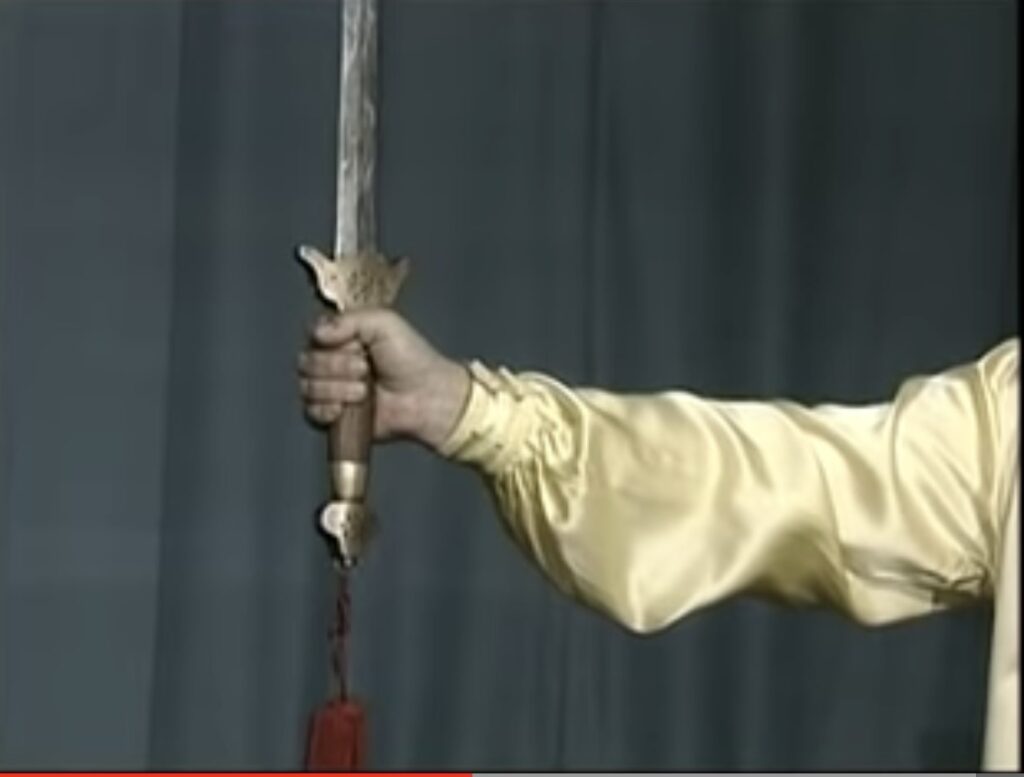
10. Thrust in Left Bow Stance
Step by Step instructions for Movement 9 and 10
11. Turn Around and Draw Sword Back Obliquely
12. Retreat and Draw Sword Back Obliquely
Step by Step instructions for Movement 11 and 12
13. Lift Knee and Hold Sward with Both Hands
14. Jump and Flat Thrust
Step by Step instructions for Movement 13 and 14
15. Circle Sword in Left Empty Stance (Clockwise)
16. Circle Sword in Right Bow Stance (Counterclockwise)
17. Turn Around and Withdraw Sword
18. Thrust Flat Sword with Feet Together
19. Lifting Block in Left Bow Stance
20. Lifting Block in Right Bow Stance
21. Lifting Block in Left Bow Stance
22. Step Forward and Thrust Backward
23. Turn Around and Chop
24. Point Sword in Empty Stance
25. Stand on One Leg and Support Sword Horizontally
26. Hook and Chop in Bow Stance
27. Circle Sword and Chop in Empty Stance
28. Step Back and Strike Back
29. Step Forward and Thrust Flat Sword
30. Withdraw Sword in T-Stance
31. Turn Around and Wipe Horizontally
32. Thrust Forward in Bow Stance
Excellent class
The teacher is clear in her instruction and incredibly skilled in the art. She genuinely hopes every student works to the best of their ability and patiently guides them through the learning journey.
Patient and talented teacher
The teacher offers clear instruction and demonstrates the movements with grace and amazing ability.
